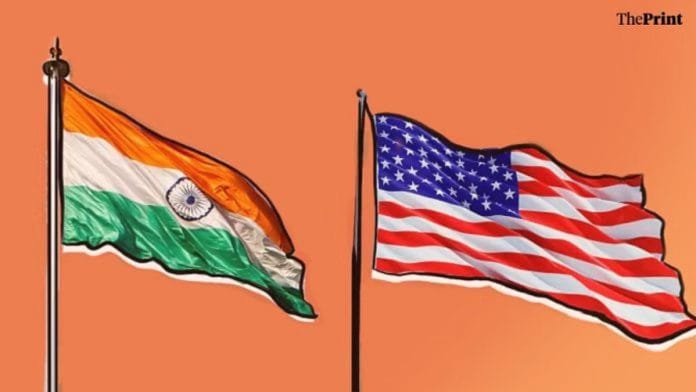India’s relationship with the United States is multi-faceted. Several top Fortune 500 companies in the US—which make it an enviable economy—are led by people of Indian origin. Ivy League universities, which contribute to America’s reputation as the knowledge power of the world, have professors, deans, and even presidents of Indian origin. Indian-origin scientists have won Nobel Prizes, and the US medical system—one of the world’s best—benefits from Indian-origin doctors, pharmaceutical researchers, and innovators in drug development. Even NASA, which recently partnered with ISRO, has Indian-origin scientists playing key roles.
These examples highlight the depth of India-US collaboration and its far-reaching benefits. While we often celebrate these ties, we were recently hit with a severe jolt—President Donald Trump’s unilateral announcement of tariffs on Indian goods. This comes despite months of trade negotiations and a shared goal to deepen economic ties.
I recall, during Trump’s first term, when I served as India’s Minister of Commerce and Industry, I negotiated with former Commerce Secretary Wilbur Ross and former US Trade Representative Robert Lighthizer about trade-related issues. We also engaged with US agriculture and dairy industry representatives to explain that loosening of regulations could severely impact our social sector and sensitive religious practices.
Even then, many US industry leaders across sectors strongly supported closer trade ties with India. That’s why this sudden tariff decision is disappointing. But the world needs diplomacy, statesmanship, and mechanisms for cooperation—especially between two countries that consider themselves natural allies. India and the US share democratic values, respect for freedom, and a robust people-to-people connection. Indian professionals aren’t stealing jobs in the US—they’re creating them. In fact, a study by a reputed US organisation shows how Indian investments have created thousands of jobs in America.
India isn’t a threat
India is not the top contributor to the US trade deficit. Trade deficits fluctuate like blood pressure—they go up and down. As the world’s third-largest aviation market, India will need to buy a vast number of aircraft and related infrastructure. The US is an obvious supplier. With its transformation into an energy exporter, the US also has opportunities to supply LNG to India—provided we address transportation challenges, since no pipeline exists between the two.
India also contributes to US innovation. Many American corporates grow by acquiring smaller startups—often born in garages. India, with the third-largest startup ecosystem, can be a fertile source of innovation and tech ideas that fuel US corporate growth.
Our first Green Revolution was also a product of India-US collaboration. In the 1960s, an agreement between US Agriculture Secretary Orville Freeman and India’s Chidambaram Subramaniam, along with M.S. Swaminathan, helped India shift from being a food importer to an exporter. We owe much of that success to our partnership with the US.
Geopolitically, Asia is emerging as the key theatre of global politics. India is projected to become the second-largest economy in Asia by 2030 and has a growing presence in Africa. We’ve always respected the territorial integrity of other nations and pose no strategic threat. US investments in India won’t just strengthen our economy—they’ll boost America’s too. As global norms shift, India can play a key role in shaping a fairer order—alongside the US.
Also read: India must not retaliate to Trump’s tariff tactic. Secure interim deal, fix internal issues
Benefits of cooperation over trade friction
Trade should not be the sole lens through which we assess this precious bilateral relationship. For many Indians, the US represents aspiration, freedom, and opportunity. People-to-people ties remain the foundation of this bond.
It’s time to return to the negotiating table and think calmly and clearly about the benefits of cooperation. Every bilateral relationship must weigh the cost of confrontation against the benefits of partnership—and in this case, the latter clearly outweighs the former.
The current trade friction stems from India’s trade surplus, but this imbalance is likely to ease. India’s economy is growing rapidly, with soaring demands in sectors like aviation, where US-India complementarities are obvious.
President Trump and Prime Minister Modi share a strong personal rapport. Their respective campaigns—Make America Great Again and Make in India—are complementary. Working together is the best way for both countries to uphold democratic values worldwide.
However, ground realities must not be ignored. Most Indian farmers are marginal, with landholdings of less than a hectare. India’s largest dairy brand, Amul, sources milk from women farmers with just two or three cattle. These farmers depend on this income for survival. This is not corporate dairy or agriculture—it’s subsistence-level farming. They cannot be expected to compete with giant agribusinesses abroad.
In my discussions with US counterparts, both in government and industry, I found an understanding of these concerns. I hope this awareness continues to shape the future of our bilateral relationship.
India and the US have a unique opportunity to grow together, support a rules-based global order, and build a partnership that benefits not just our two nations, but the world.
Suresh Prabhu is India’s former Minister of Commerce and Industry (2017-2019). Views are personal. He tweets @sureshpprabhu.
(Edited by Ratan Priya)






